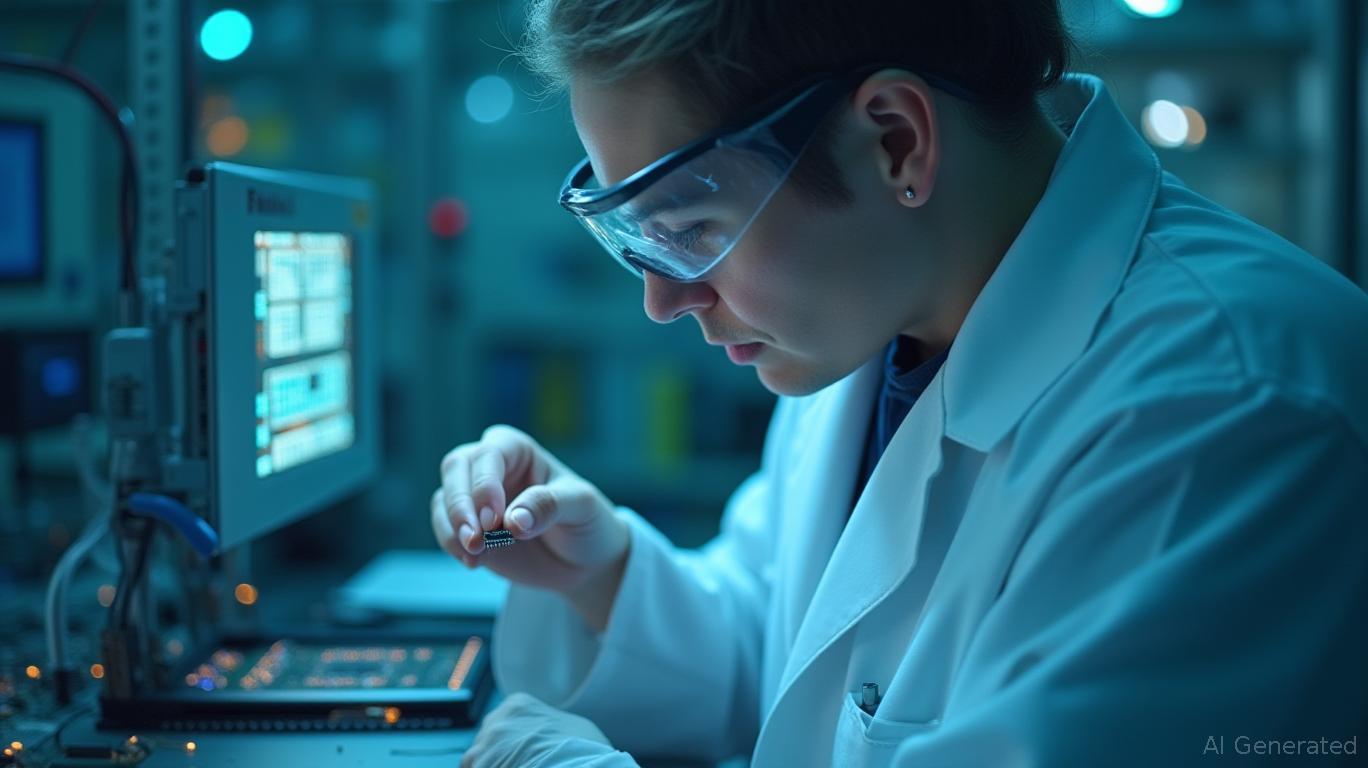Texas Instruments’ Automotive Semiconductor Push: A Collision Course with the Future
Texas Instruments (TXN) has staked its 2025 growth narrative on a bold bet: that its semiconductor innovations will redefine automotive safety and autonomy. With new lidar, clock, and radar chips announced this year, TI aims to solidify its position as a critical supplier to automakers racing toward fully autonomous vehicles. But can this analog semiconductor giant overcome its struggles in embedded processing and macroeconomic headwinds to capitalize on the $120 billion automotive semiconductor market?

The Technical Breakthroughs: Precision Meets Practicality
TI’s Q1 2025 announcements centered on three pillars:
1. LMH13000 Lidar Driver: This chip enables lidar systems to detect obstacles 30% farther away than competitors, thanks to an 800-picosecond rise time and a 5A output current that stays within 2% accuracy even at extreme temperatures. By integrating control signals into a single package, TI reduces lidar module costs by 30% and shrinks their size fourfold—a critical step toward mainstream adoption.
2. BAW-Based Clocks: TI’s CDC6C-Q1 oscillator and LMK3H0102-Q1 clock generators leverage bulk acoustic wave (BAW) technology to deliver 100x better reliability than quartz-based alternatives, with a failure-in-time (FIT) rate of just 0.3. This ensures flawless timing for ADAS systems in harsh environments, from desert heat to winter ice.
3. AWR2944P Radar Sensor: With an on-chip hardware accelerator, this radar chip handles machine learning tasks like object classification directly, freeing up processing power for safety-critical decisions. Its enhanced signal-to-noise ratio extends detection range, critical for collision avoidance at highway speeds.
These innovations are not just incremental upgrades—they’re designed to tackle longstanding bottlenecks in automotive electronics. For instance, the lidar driver’s temperature stability eliminates the need for bulky cooling systems, while BAW clocks cut the risk of data corruption during sudden accelerations or pothole impacts.
Strategic Imperatives: Analog Dominance in a Software-Defined World
TI’s strategy hinges on its $18 billion analog semiconductor franchise, which generates operating margins of 34.15%—the highest in its portfolio. Automotive applications now account for 70% of TI’s total revenue, up from 42% in 2013, as EVs and ADAS systems demand more power management ICs and signal processors.
The company is doubling down on manufacturing control:
- A $5 billion capital expenditure (CapEx) in 2025 will expand its 300mm wafer fabrication capacity, reducing costs by $20 per vehicle in radar systems alone.
- The CHIPS Act is expected to subsidize its Utah fab, shielding it from geopolitical supply chain risks.
Yet challenges loom. TI’s embedded processing segment, crucial for automotive infotainment and AI, has seen revenue fall 10% year-over-year due to pricing pressures and shifting customer preferences. This segment’s struggles contrast sharply with its analog prowess, creating a strategic imbalance.
Investor Considerations: Balancing Growth and Dividends
TI’s dividend yield of 2.97% and payout ratio near 100% appeal to income investors, but they raise concerns about reinvestment capacity. With $7.6 billion in cash, management must decide whether to prioritize shareholder returns or R&D to revive embedded processing.
The automotive semiconductor market offers tailwinds:
- EV adoption: TI’s chips are critical for battery management systems, and China’s EV market (20% of global GDP) is a key growth lever.
- ADAS penetration: By 2030, 90% of new cars will have Level 2+ autonomy, requiring lidar, radar, and clock chips.
However, risks persist:
- Margin pressure: Competitors like Qualcomm and NVIDIA are integrating AI directly into automotive chips, potentially sidelining TI’s standalone solutions.
- Macroeconomic volatility: A global recession could slash automotive sales, as seen in 2020 when semiconductor revenue dropped 15%.
The Bottom Line: A Leader on Shaky Ground
Texas Instruments’ automotive semiconductor strategy is a masterclass in leveraging analog expertise to address real-world technical challenges. The LMH13000 and BAW clocks are game-changers, and its manufacturing investments position it to capture 17% annual revenue growth through 2026. Yet embedded processing’s underperformance and a dividend payout ratio bordering on unsustainable create vulnerabilities.
Investors should watch two key metrics:
1. Embedded processing recovery: TI’s ability to innovate here will determine if it can compete in software-defined vehicles.
2. 300mm fab efficiency: By 2026, these facilities should reduce costs and boost gross margins to 30.5%, a critical threshold for profitability.
In conclusion, TI’s automotive bets are high-stakes but justified. With $5 billion in CapEx and a 70% market share in certain automotive analog segments, it holds a structural advantage. Yet success hinges on balancing its dividend commitments with reinvestment—a tightrope walk that will define its valuation in the coming years. For now, TI remains a pillar of the automotive semiconductor world, but the road ahead is littered with potholes.










